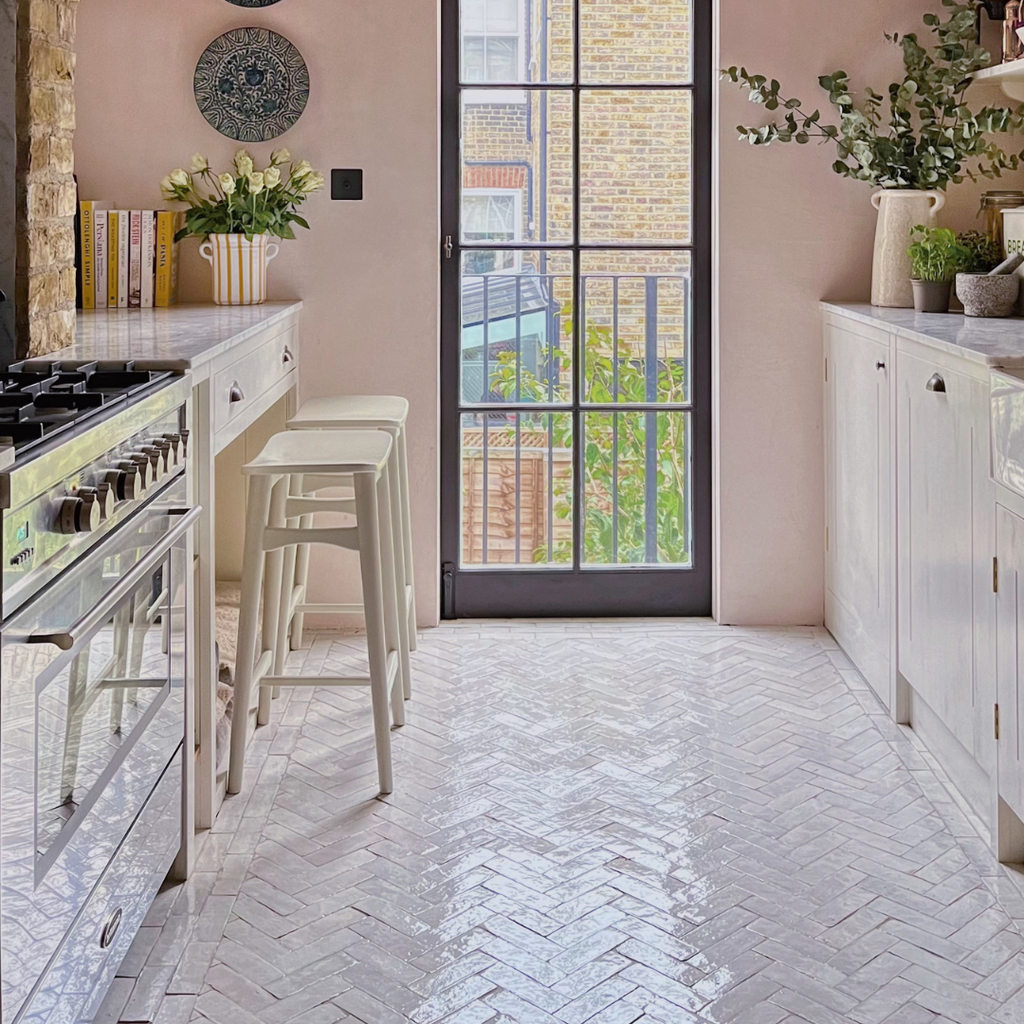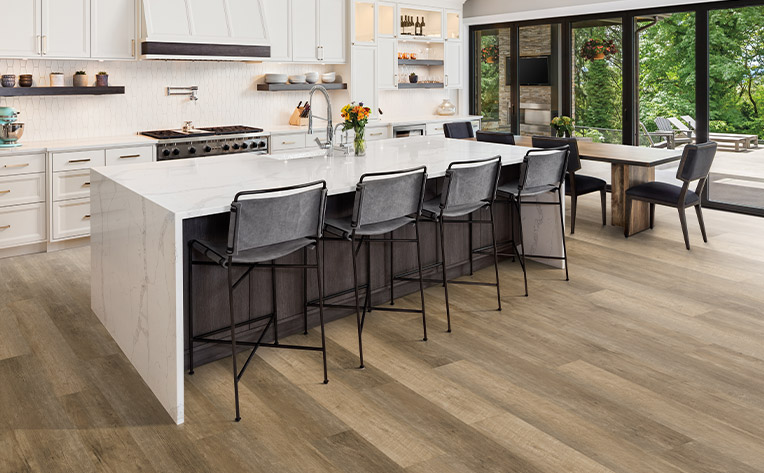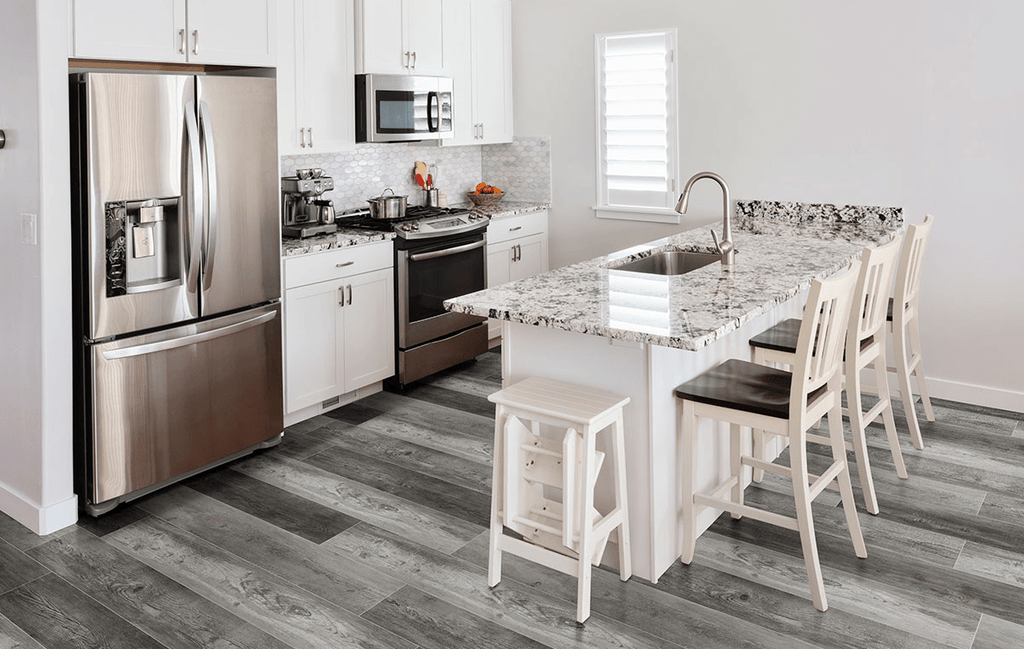Choosing the right flooring for your kitchen can feel overwhelming. You want something that looks great, handles spills, and stands up to daily wear and tear.
But with so many options out there, how do you know which one suits your lifestyle and style best? This guide will help you discover the best flooring for your kitchen—making your space not only beautiful but also practical and easy to maintain.
Keep reading to find the perfect match for your home and enjoy a kitchen floor that truly works for you.

Credit: www.bertandmay.com
Durability Factors In Kitchen Flooring
Choosing the right flooring for your kitchen is crucial, especially when considering durability. The kitchen is one of the busiest rooms in your home, experiencing heavy foot traffic, spills, and the occasional dropped dish. Understanding durability factors will help you select flooring that can withstand these challenges without losing its charm and functionality.
Wear And Tear Resistance
Your kitchen floor should be able to handle daily wear and tear. Consider materials that resist scratches, dents, and scuffs. For example, ceramic tiles and luxury vinyl are popular choices because they offer excellent resilience against physical damage. But what about the cozy warmth of hardwood? While beautiful, it may not be the best choice for kitchens due to its vulnerability to scratches and dents.
Moisture And Stain Handling
Kitchens are prone to spills and splashes, making moisture resistance a key factor. Porcelain tiles and vinyl flooring excel in water resistance, ensuring spills don’t lead to long-term damage. Think about how often you cook or entertain. If your kitchen sees a lot of action, opt for materials that can handle moisture without warping or staining. This can save you from costly repairs down the line.
Maintenance Needs
How much time do you have for cleaning and maintenance? Some flooring types require more upkeep than others. Tile and vinyl floors generally require simple cleaning routines, while hardwood might demand more attention to prevent wear. Ask yourself: Are you ready for regular polishing and sealing, or do you prefer a low-maintenance option? Your lifestyle should dictate your choice to ensure your flooring stays pristine with minimal effort.
Top Flooring Materials For Kitchens
Choosing the right flooring for a kitchen is important for both style and function. Kitchens face spills, foot traffic, and frequent cleaning. The best flooring materials must handle these challenges well. They should be durable, easy to clean, and look great. Below are some top flooring options that work well in kitchens.
Hardwood Options
Hardwood floors add warmth and beauty to kitchens. They come in many wood types and finishes. Oak, maple, and hickory are popular choices. Hardwood is strong but can scratch and stain easily. Regular sealing helps protect it from water damage. It feels comfortable underfoot and adds value to your home.
Ceramic And Porcelain Tiles
Ceramic and porcelain tiles are highly durable and water-resistant. They come in many colors, shapes, and patterns. These tiles are easy to clean and handle heavy foot traffic. Porcelain is denser and less porous than ceramic, making it more water-resistant. Both types provide a cool, hard surface that lasts for years.
Vinyl And Linoleum
Vinyl and linoleum floors offer affordable and water-resistant options. Vinyl is made from synthetic materials, while linoleum is natural and eco-friendly. Both come in sheets, tiles, or planks. These floors are soft underfoot and resist stains and moisture well. Easy installation and low maintenance make them kitchen favorites.
Natural Stone Choices
Natural stone floors like granite, slate, and marble add elegance to kitchens. They are very durable and unique in appearance. Stone is heavy and cold but can be warmed with radiant heat. Sealing is necessary to prevent stains and water damage. These floors create a classic look but may require more care.
Laminate Flooring
Laminate flooring mimics wood or stone at a lower cost. It is made of several layers fused together. Laminate is scratch-resistant and easy to clean. Water-resistant options are available but not fully waterproof. Installation is simple, and laminate is a good choice for budget kitchens. It offers good durability with less upkeep.
Comparing Cost And Longevity
Choosing the right kitchen flooring means balancing how much you spend now against how long your floor will last. Cost and durability go hand in hand, but some materials demand a higher upfront price while offering years of use. Understanding these factors helps you avoid surprise expenses and keeps your kitchen looking great over time.
Initial Investment
Your budget often sets the stage for which flooring options you can consider. Vinyl and laminate tend to be wallet-friendly, with prices usually under $5 per square foot. Hardwood and natural stone, however, can run $10 to $20 or more per square foot due to material quality and installation complexity.
Think about installation too. Some tiles or hardwood floors require professional work, adding to the initial cost. If you’re handy, vinyl planks might let you save by doing it yourself. What level of upfront spending feels comfortable for your kitchen project?
Lifespan Expectations
Next, consider how long your flooring will perform well. Vinyl can last 10 to 20 years, especially if you pick a high-quality type. Hardwood floors, when maintained, often exceed 25 years and can even be refinished to look new.
Ceramic and porcelain tiles are tough and can last over 30 years but might crack under heavy impact. If you cook daily and have kids or pets, durability is key. Would you prefer something that lasts decades, or are you okay with replacing your floor sooner?
Repair And Replacement Costs
Flooring that’s easy to repair can save you money in the long run. Vinyl and laminate usually allow simple patching of damaged sections. Hardwood floors might need sanding and refinishing, which can be pricey but extends their life significantly.
Tiles can be tricky—replacing broken tiles isn’t always straightforward and matching colors can be challenging. Consider how often your kitchen floor might get damaged. Is it better to invest in tougher flooring now or prepare for ongoing repairs?
Comfort And Safety Considerations
Choosing the right kitchen flooring isn’t just about looks—it’s about how comfortable and safe it makes you feel every day. Your kitchen is a busy space where you spend a lot of time standing, moving, and sometimes rushing. Paying attention to comfort and safety can make a big difference in your daily routine and prevent accidents.
Slip Resistance
Slippery floors in the kitchen are a common cause of falls, especially when spills happen. Look for flooring materials with good grip, like textured vinyl or ceramic tiles with a matte finish. Avoid glossy surfaces that become slick when wet, as they increase the risk of slipping.
Have you ever noticed how your shoes slide on polished floors? Choosing a slip-resistant floor protects you, your family, and guests from unexpected falls. It’s a simple way to make your kitchen safer without sacrificing style.
Impact On Standing Fatigue
Standing on hard floors for long periods can cause tired feet and sore legs. Flooring materials like cork or cushioned vinyl offer a softer surface that reduces fatigue. These options absorb impact better, making it easier to stand while cooking or cleaning.
If you spend hours preparing meals, consider how your floor affects your comfort. Even a small difference in floor cushioning can improve your energy levels by the end of the day. Wouldn’t you want a kitchen floor that supports your well-being?
Child And Pet Safety
Kids and pets bring extra challenges in the kitchen. Floors should be easy to clean but also gentle enough to prevent injuries from falls or rough play. Soft, non-toxic materials like rubber or cork can cushion tumbles and protect tiny hands and paws.
Think about the times your child or pet darted across the kitchen—did the floor help or harm? Flooring that combines safety with comfort gives you peace of mind while keeping your loved ones safe. How does your current kitchen floor measure up in this regard?
Style And Aesthetic Options
Choosing the right flooring for your kitchen is about more than durability and ease of cleaning. The style and aesthetic you select sets the tone for the entire space. Your flooring can either blend seamlessly or stand out as a focal point, reflecting your personal taste and enhancing your kitchen’s vibe.
Color And Texture Trends
Colors and textures in kitchen flooring have evolved beyond plain neutrals. Bold hues like deep blues and greens are gaining popularity, adding character without overwhelming the room.
Texture plays a big role too. Matte finishes offer a subtle, modern look, while distressed wood or textured tiles bring warmth and rustic charm. Have you thought about how different textures might influence the feel of your kitchen?
Matching Kitchen Themes
Your kitchen’s theme guides your flooring choice. For a sleek, contemporary kitchen, smooth porcelain tiles or polished concrete work well. In contrast, a farmhouse style calls for warm woods or patterned ceramic tiles.
Think about how your cabinets, countertops, and backsplashes interact with the floor. Does your flooring support the theme or clash with it? Sometimes changing the floor can breathe new life into an old kitchen.
Customizing With Patterns
Patterns let you make a statement without overwhelming the space. Chevron or herringbone wood floors add dynamic movement underfoot, while geometric tiles create visual interest and depth.
You can also mix and match materials, like combining wood with stone or tile to highlight different zones in an open-plan kitchen. What kind of pattern would best express your style while standing up to kitchen traffic?

Credit: www.flooringamerica.com
Eco-friendly Kitchen Flooring
Eco-friendly kitchen flooring offers a smart way to protect the environment and create a healthy home. Choosing green options reduces waste and pollution. It also improves indoor air quality and lowers your carbon footprint. Many eco-friendly floors are durable and beautiful. They fit well in kitchens where spills and foot traffic are common.
Sustainable Materials
Sustainable materials come from sources that renew quickly. Bamboo and cork are popular choices. Bamboo grows fast and is very strong. Cork is harvested from tree bark without cutting trees down. These materials provide natural warmth and comfort underfoot. They also resist moisture and stains, ideal for kitchens.
Recycled Content
Floors made with recycled content help reduce landfill waste. Recycled glass tiles and reclaimed wood are great options. These materials give a unique look to your kitchen. They use old materials that would otherwise be thrown away. This choice supports recycling efforts and saves natural resources.
Low-voc Finishes
Low-VOC finishes mean fewer harmful chemicals in the air. VOCs cause bad smells and health problems. Choosing flooring with low or no VOCs keeps your kitchen air clean. Natural oils and water-based finishes often have low VOC levels. They protect the floor while being safe for your family.
Installation Tips And Challenges
Choosing the right flooring for your kitchen is only part of the journey. Installation plays a huge role in how your floor looks and performs over time. Knowing the key tips and challenges can save you from costly mistakes and frustration.
Diy Vs Professional Installation
Thinking about installing the floor yourself? It can be tempting to save money, but ask yourself if you have the right tools and skills. Some materials, like luxury vinyl or laminate, are more DIY-friendly, while tile or hardwood often demand professional expertise.
Professionals bring experience with tricky cuts and moisture barriers, reducing the risk of damage. If you choose DIY, start small and be ready for a learning curve. Remember, a poorly installed floor can lead to bigger expenses down the road.
Subfloor Preparation
Your subfloor must be clean, dry, and level before installation. Any bumps or moisture issues can cause warping or cracks later. Use a level to check for uneven spots and sand or fill them as needed.
Don’t skip this step—I’ve seen new floors buckle simply because the subfloor was ignored. Moisture barriers are critical, especially in kitchens, to prevent damage from spills and humidity.
Common Installation Issues
Gaps between planks, uneven edges, and bubbling are frequent problems. These often result from rushing or ignoring manufacturer instructions. Pay close attention to acclimating your flooring material to room temperature before starting.
Another challenge is aligning patterns or grout lines, which can ruin the aesthetic if off by even a small margin. Are you prepared to spend the extra time measuring twice and cutting once? Patience during installation always pays off.
Maintaining Kitchen Floors
Maintaining kitchen floors is essential to keep them looking fresh and lasting longer. Your kitchen floor faces constant traffic, spills, and stains that can wear down its appearance. Developing a solid cleaning routine helps you protect your investment and keeps your kitchen hygienic.
Daily Cleaning Routines
Start each day by sweeping or vacuuming your kitchen floor to remove crumbs and dirt. This simple step prevents grit from scratching surfaces like hardwood or tile. Use a damp mop with a mild cleaner suited to your floor type—avoid harsh chemicals that may damage finishes.
Think about how often you cook and the type of messes you usually encounter. Do you notice frequent grease buildup or crumbs near your stove? Tailoring your daily cleaning to these spots can save you effort later.
Handling Spills And Stains
Spills happen fast in the kitchen, but cleaning them quickly makes all the difference. Blot liquids immediately with a soft cloth rather than wiping, which can spread the stain. For stubborn spots, use a gentle cleaner designed for your floor material.
Have you ever let a spill sit and ended up with a permanent mark? Learning the right way to react can save you from costly repairs. Keep a small cleaning kit nearby to address spills as soon as they occur.
Periodic Deep Cleaning
Beyond daily upkeep, deep cleaning your kitchen floor every few months refreshes its look. This might include scrubbing grout lines on tile or applying a special wood floor polish. Follow manufacturer guidelines to avoid damaging your floor during these intensive cleanings.
Consider setting a reminder for deep cleaning tasks so they don’t slip your mind. Your floor will reward you with a brighter appearance and better durability over time.

Credit: www.cypresscab.com
Frequently Asked Questions
What Is The Most Durable Kitchen Flooring?
Porcelain tile is highly durable and resistant to scratches and moisture. It withstands heavy foot traffic and spills, making it ideal for kitchens.
Which Kitchen Flooring Is Easiest To Clean?
Vinyl flooring is easy to clean and maintain. It resists stains and water, requiring only regular sweeping and mopping for upkeep.
Is Hardwood Suitable For Kitchen Floors?
Yes, hardwood adds warmth and style but needs sealing to protect against water damage. Proper care extends its kitchen lifespan.
What Flooring Resists Water Best In Kitchens?
Ceramic tile and vinyl flooring resist water effectively. They prevent moisture damage and are perfect for areas prone to spills.
Conclusion
Choosing the right kitchen flooring matters for comfort and style. Durable floors handle spills and heavy foot traffic well. Easy-to-clean materials save time and effort daily. Consider your budget and how much care each option needs. Think about the look that fits your kitchen best.
A good floor lasts for many years without trouble. Take your time to pick what feels right for you. Your kitchen deserves a floor that works and looks great.


